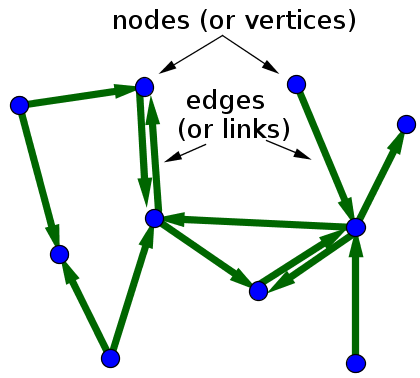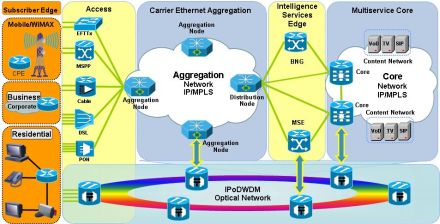Little Known Facts About Edge Networking.
Table of ContentsGetting My Edge Networking To Work9 Simple Techniques For Edge NetworkingThe smart Trick of Edge Networking That Nobody is Talking AboutSome Known Questions About Edge Networking.The Single Strategy To Use For Edge NetworkingSee This Report about Edge Networking
Edge computing is changing the method data is being handled, processed, and provided from countless devices all over the world. The explosive development of internet-connected devices the IoT together with brand-new applications that require real-time computing power, continues to drive edge-computing systems. Faster networking technologies, such as 5G cordless, are enabling edge computing systems to accelerate the development or support of real-time applications, such as video processing and analytics, self-driving cars and trucks, synthetic intelligence and robotics, to call a couple of.Gartner defines edge computing as "a part of a dispersed computing geography in which info processing is located near to the edge where things and people produce or take in that info." At its fundamental level, edge computing brings computation and information storage closer to the devices where it's being collected, rather than depending on a central location that can be thousands of miles away.
In addition, business can save cash by having the processing done in your area, reducing the amount of data that requires to be processed in a centralized or cloud-based place. Edge computing was developed due to the rapid growth of IoT devices, which link to the internet for either receiving information from the cloud or delivering data back to the cloud.
Indicators on Edge Networking You Need To Know
Network World/ IDGThink about gadgets that monitor production equipment on a factory flooring, or an internet-connected camera that sends live video from a remote office. While a single device producing information can transmit it throughout a network rather easily, problems occur when the number of devices transferring data at the same time grows.
Not just will quality suffer due to latency, but the costs in bandwidth can be remarkable. Edge-computing hardware and services assist solve this issue by being a regional source of processing and storage for many of these systems. An edge gateway, for example, can process data from an edge device, and then send just the relevant data back through the cloud, minimizing bandwidth requirements.
These edge devices can consist of several things, such as an IoT sensing unit, an employee's laptop, their newest smart device, the security electronic camera or even the internet-connected microwave in the office break space. Edge gateways themselves are considered edge devices within an edge-computing infrastructure. For numerous business, the expense savings alone can be a chauffeur towards releasing an edge-computing architecture.
The 2-Minute Rule for Edge Networking

Applications such as virtual and increased truth, self-driving cars, clever cities and even building-automation systems need fast processing and action." Edge computing has developed significantly from the days of isolated IT at ROBO [Remote Office Branch Office] places," states Kuba Stolarski, a research director at IDC, in the "Worldwide Edge Infrastructure (Compute and Storage) Forecast, 2019-2023" report (Edge Networking).

4 Easy Facts About Edge Networking Explained
From a security standpoint, information at the edge can be problematic, specifically when it's being dealt with by different devices that may not be as safe and secure as a centralized or cloud-based system. As the variety of IoT gadgets grow, it's important that IT comprehend the potential security issues around these devices, and to ensure those systems can be protected.
In addition, differing device requirements for processing power, electrical power and network connectivity can have an impact on the dependability of an edge gadget. This makes redundancy and failover read this post here management crucial for gadgets that process information at the edge to ensure that the information is delivered and processed correctly when a single node goes down.
Rather of just providing the quicker speeds and informing business to continue processing data in the cloud, lots of providers are working edge-computing methods into their 5G deployments in order to provide faster real-time processing, particularly for mobile phones, linked vehicles and self-driving vehicles. In its current report "5G, IoT and Edge Compute Trends," Futuriom writes that 5G will be a catalyst for edge-compute technology.
How Edge Networking can Save You Time, Stress, and Money.
It cites low-latency applications that include IoT analytics, artificial intelligence, virtual reality, autonomous automobiles as those that "have brand-new bandwidth and latency attributes that will require support from edge-compute facilities." In its forecasts for 2020, Forrester also mentioned the need for on-demand calculate and application engagements would play a function in driving the growth of edge computing in 2020.
Join the Network World communities on Facebook and LinkedIn to discuss topics that are top of mind (Edge Networking). Copyright 2019 IDG Communications, Inc.
Edge computing is a distributed computing paradigm that brings computation and information storage closer to the location where it is required, to improve reaction times and save bandwidth. The origins of edge computing depend on content delivery networks that were developed in the late 1990s to serve web and video content from edge servers that were deployed near users.
What Does Edge Networking Mean?
Modern edge computing look at this site substantially extends this approach through virtualization innovation that makes it easier to deploy and run a larger series of applications on the edge servers. The edge computing facilities One meaning of edge computing is any type of computer system program that delivers low latency nearer to the demands.